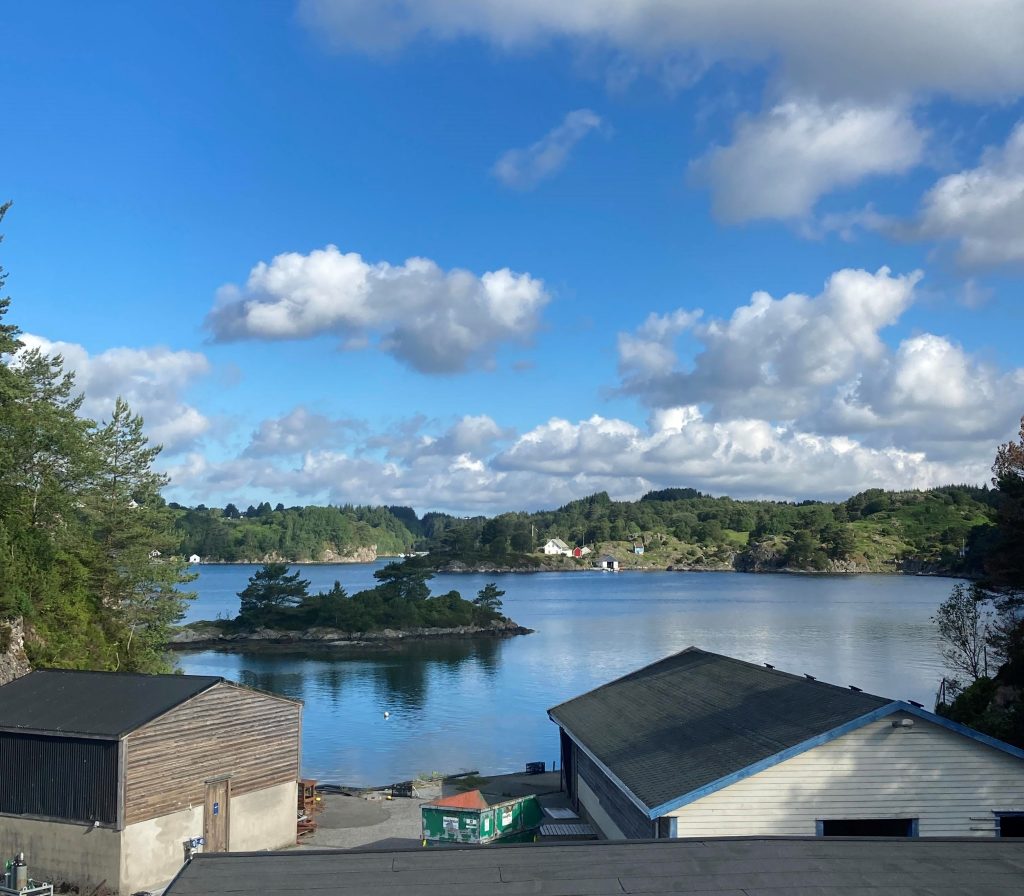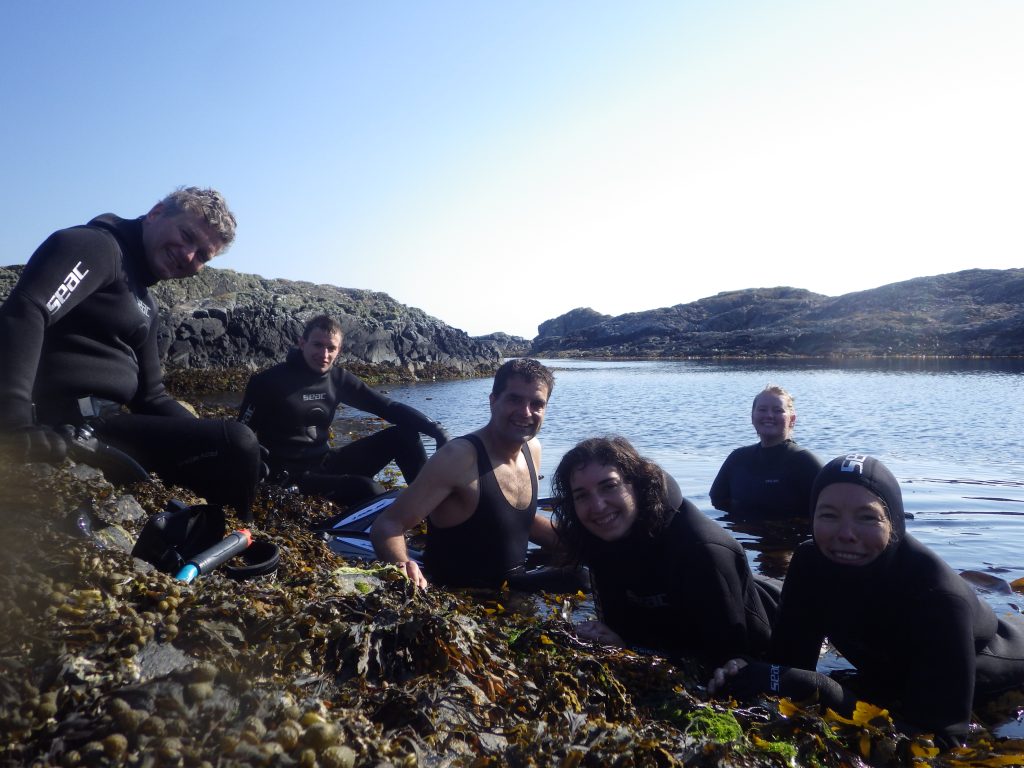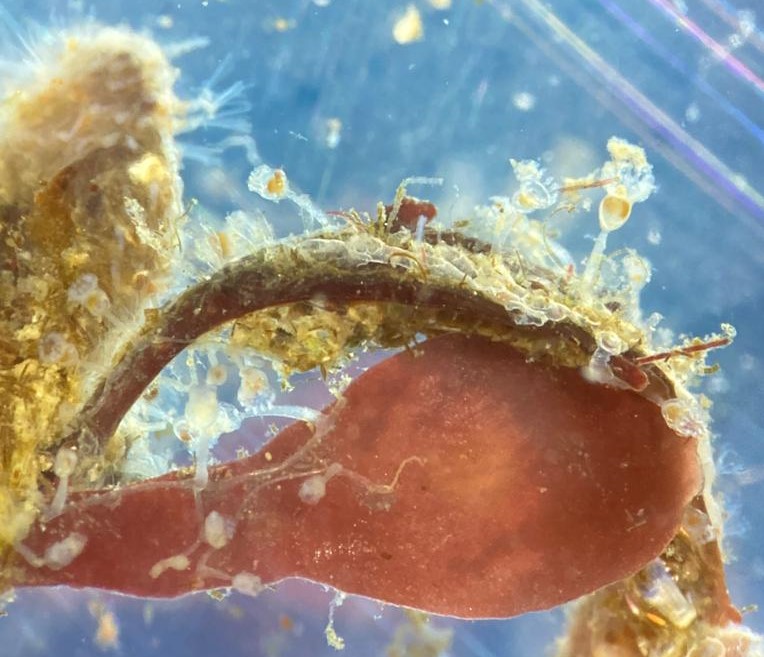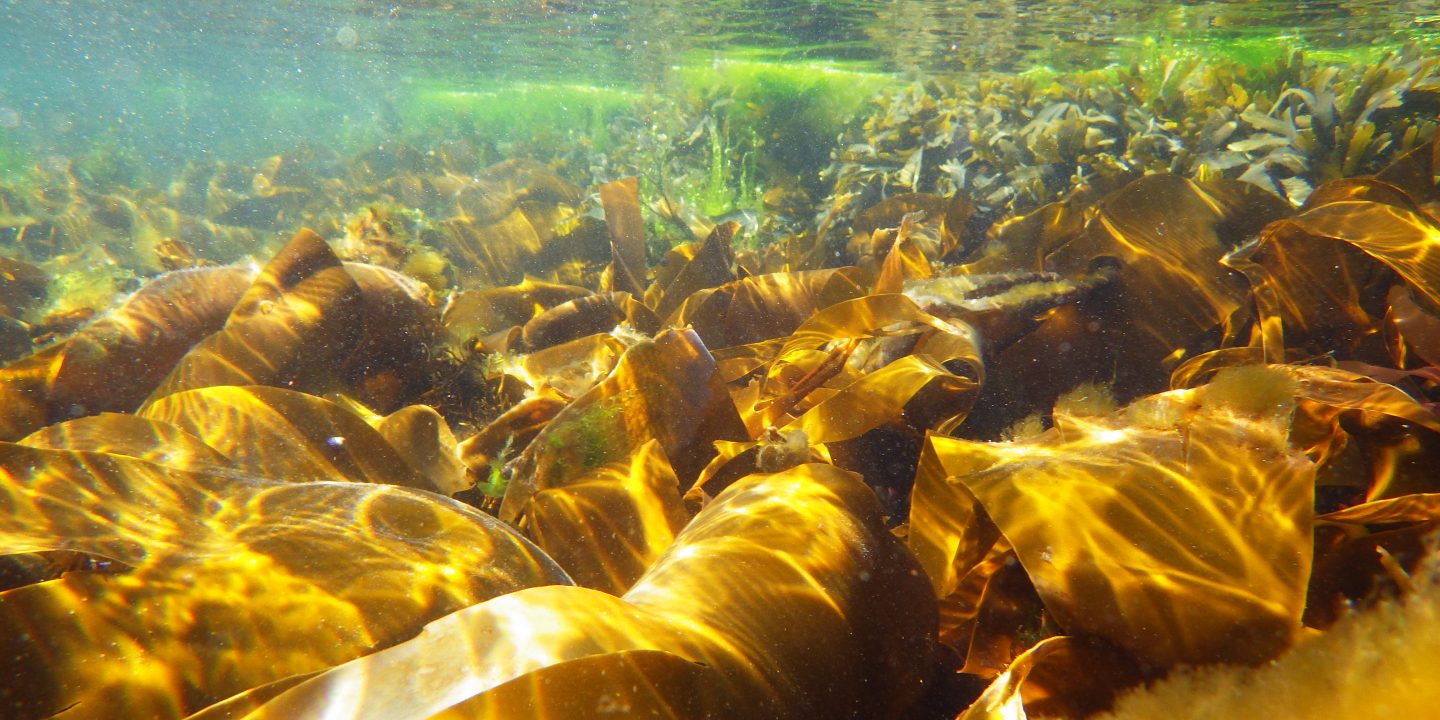Summer is here, so it’s time for the Artsdatabanken project team to go back to the field. Or to the sea, in our case. After driving 500km from the east to the west coast, through beautiful mountains and majestic fjords, we arrived at Austevoll (Figure 1), an archipelago consisting of 667 islands one hour and a ferry ride south from Bergen.

We stayed two weeks at Havforskningsinstituttet research station, who kindly let us use their labs and facilities, and used it as our base. We set out to collect invertebrates living in the “marine algae belt”, comprised of kelp forests, seagrass meadows, and rocky reefs with coralline red algae. This time we could bring more collaborators to the field, including researchers from Sweden and Germany and three students from the University of Oslo (Figure 2).

During the first week, the sun shone and temperatures were quite high (at least for west coast standards). Yet, Bergen had to do justice to its reputation, so on the second week we got rain on a daily basis. But that didn’t stop us from snorkelling around the archipelago, and even doing some daily trips to nearby sampling spots. We were able to collect animals from all of the target habitats and found the six groups we were aiming for, including the elusive entoprocts (Figure 3)!

After such a successful trip, we are looking forward to the next one, coming already next week. This time we’re heading to higher latitudes… Stay tuned!
![]()

1 Comment on “How to spend summer in Norway: fieldwork on the west coast”